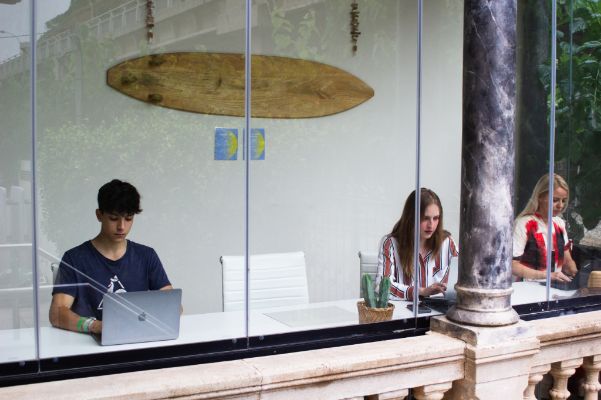In the world of coworking and coliving, content isn’t just marketing — it’s storytelling, connection, and community building. How to create valuable content for coworking and coliving businesses starts with understanding that, whether you’re running a rural space or a city hub, your content shapes how potential members experience your brand before they even arrive.
In this post, I’ll use Kalima Beach Life, a coworking and coliving space located just 45 minutes from Barcelona, as a real-world case study. Kalima offers a peaceful beachside setting, strong community vibes (both local and international) and a lifestyle that blends remote work with wellness and exploration. We’ll look at how to build content that speaks directly to this type of audience.
You’ll learn:
- How to identify and understand your audience
- What kinds of content truly resonate with coworking and coliving communities
- Ways to use stories, testimonials, and events to create authentic, engaging content
- How to balance lifestyle storytelling with practical info like pricing and bookings
- Simple steps to start creating content that reflects your space’s unique vibe and builds connection
Let’s dive in.
1. Start with your audience: Who are you creating for?
Before you shoot your next video or write another blog post, ask: “Who am I talking to?” Coworking and coliving attract people with different interests and your job is to define them clearly.
Example 1: The coliving explorer
- Remote worker
- Loves travel, the beach, and wellness
- Wants connection, but also quiet
- Prefers proximity to a city without being directly in it
- Comes to Kalima for work life balance, community, and the sea
Example 2: The local coworker
- Lives in nearby villages
- Works remotely, usually from home
- Wants an inspiring work environment
- Seeks social interaction, work life balance, and professional community
These two users might seem different, but both value community, belonging, and balance.
Tip: Use surveys, interviews, or casual conversations to refine your audience personas. Knowing your people makes it easier to know what content to create.
2. What kind of content do they care about?
Once you understand your users, you can build content around what they actually want to see.
Create some content pillars – key themes or categories that reflect the interests, needs, and lifestyle of your audience.
Content pillars help you stay focused, consistent, and relevant, while covering a broad range of topics that keep your audience engaged. For Kalima Beach Life, here are some important pillars that resonate with their audience:
Lifestyle
- Photos and videos of beach sunrises, paddle breaks, working with a sea view, slow living
- Show what a day in Kalima Beach Life feels like
Community
- Testimonials and interviews from members
- Snippets from shared meals, yoga sessions, or impromptu events
- Show who your community is
Educational
- Remote work tips
- How to stay productive in a coliving space
- Travel hacks for digital nomads
- Wellness advice for remote workers
Space Showcasing
- Room and coworking space tours
- “Work with this view” content
- Show the spaces your members will be interacting with
3. Leverage Sstories, testimonials, and community events
Your guests are your best content creators. Their experiences bring authenticity, emotion, and credibility to your brand. The key is to make it easy for them to share and to capture those moments naturally.
Ask guests if they’d be open to a short video or audio interview. Keep it casual like a relaxed chat about why they chose your space, what they’ve loved, or how the experience has supported their remote work or wellbeing. These real voices build trust and make your content relatable.
Community events are just as important. Think of events as a content goldmine. Afterworks, BBQs, yoga sessions, workshops, and group dinners are perfect moments to document the lifestyle and energy of your space without staging anything. Snap photos, film quick clips, or even ask guests to share a reflection after the event.
Repurpose what you capture into reels, blog recaps, member spotlights, or even a simple photo post.
Don’t forget clear sales information
While storytelling and lifestyle content build interest and connection, don’t forget the practical side: your audience also needs clear information about pricing, availability, and how to book.
Being transparent about costs helps potential guests understand the value you offer and removes barriers to taking the next step. Whether through dedicated posts or integrated into lifestyle content, clear sales details should be informative and guide interested people toward becoming members.
Final thoughts: Content that’s authentic
When your content genuinely reflects your space, from the atmosphere to the daily rhythm, as well as the people who make it unique and the interests that guide your community, it creates an authentic picture that resonates with your audience. This authenticity helps you connect with individuals who see themselves fitting into that lifestyle, which in turn, attracts the right members.
Ready to begin?
Start by mapping out your key audience types, and brainstorm 3 content ideas for each one. Or even better, ask your community. A simple question like “What’s your favorite part about being here?” can lead to your next great post.
This article is written by Sammy Jo Lueg, Communications Manager and Content Creator with a focus on coliving and coworking spaces.
